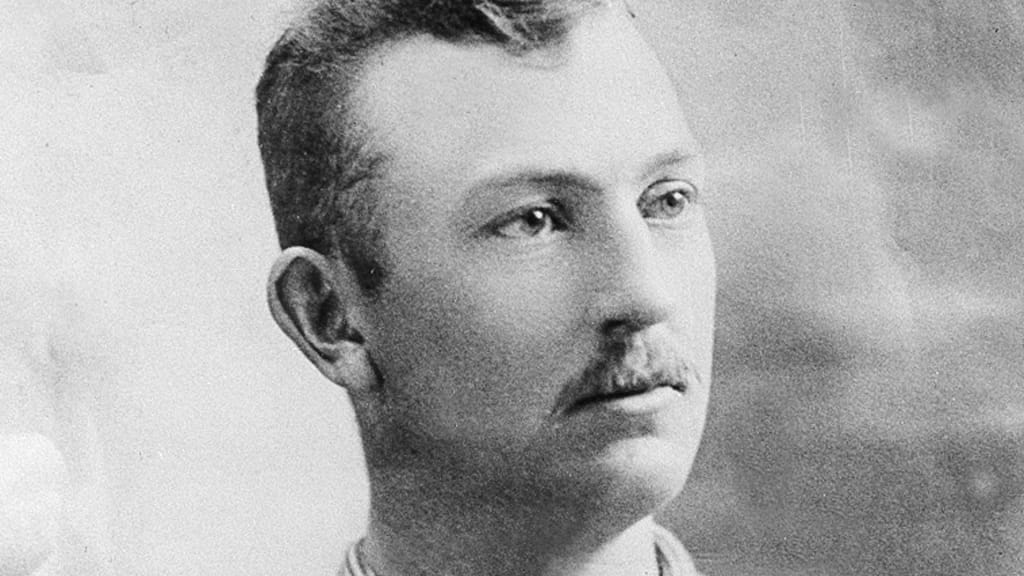
Cy Young is synonymous with pitching excellence. Since 1956, his name has been attached to the most prestigious award for a pitcher in Major League Baseball. Dozens of workhorses, flamethrowers and firemen have won this honor, all contributing to the pitching legacy that he carved out during his illustrious 22-year career.
But how, exactly, did the “Cy Young Award” as we know it come to be, and why is it named after Cy Young?
On paper, it seems obvious why Young’s name is associated with this honor. He has been the all-time wins leader since the day he retired in 1911 with 511 career victories -- a figure that will likely never be topped. Young’s Baseball Reference page is laden with gold, as he is also the Majors’ all-time leader in losses, games started, complete games, innings pitched, hits allowed, earned runs allowed and batters faced. He also threw the first perfect game in American League history on May 5, 1904, and was on the mound for the first unassisted triple play in AL/NL history.
Somewhat unbelievably by today’s standards, Young was not voted into the first Baseball Hall of Fame class in 1936, receiving less than 50 percent of the vote by the Baseball Writers’ Association of America. He squeaked in on the 1937 ballot, receiving 76.1 percent of the vote. But he still looms large as one of the first players immortalized in Cooperstown.
Young made his name in both the National and American Leagues. He spent the first 11 years of his career in the NL with the Cleveland Spiders and St. Louis Perfectos/Cardinals, where he amassed 286 of his 511 career wins, along with 418 complete games, 32 shutouts and a 3.04 ERA.
The legendary hurler moved to the AL in 1901 with the Boston Americans (renamed the Red Sox in 1908), where he spent the next eight seasons. After returning to Cleveland on the AL side with the Naps in 1909, he finished his career back in Boston in 1911 with the Rustlers (later renamed the Braves). While in the Junior Circuit, Young collected 221 more wins.
Throughout Young’s career and for years after he retired, there was no MLB award specifically to honor pitchers. The Most Valuable Player Award, which was established in 1931, traditionally skewed in favor of position players. From 1931-55, five pitchers won the AL MVP and five pitchers won the NL MVP out of 50 total possible winners across both leagues.
Commissioner Ford Frick felt that pitchers were being unfairly underrepresented by the BBWAA’s MVP voting. Shortly after Young died on Nov. 4, 1955, Frick set in motion plans to create an annual award specifically for pitchers. On July 9, 1956, the BBWAA narrowly voted in favor (14-12) of establishing a new annual award for the best pitcher in the Majors each season. In honor of the recent passing of the all-time wins leader, it was to be called the Cy Young Memorial Award.
Despite the fact that the MVP had always been awarded to one player per league, Frick was adamant that there should be only one Cy Young winner across MLB each year, to honor the fact that Young’s career accolades were almost evenly distributed between the AL and NL. So from 1956-66, there was only one annual Cy Young Award winner.
(Incidentally, the first Cy Young Award winner, Brooklyn Dodgers starter Don Newcombe, also won the 1956 NL MVP that same season.)
The Sporting News, which had given out its own annual Pitcher of the Year Award to the best pitcher in each league since 1944, disagreed with Frick’s insistence on only one Cy Young winner across both leagues. Ultimately, their method won out; soon after Frick’s retirement in 1965, his successor, Commissioner William Eckert, approved a proposal to add a second Cy Young Award.
Sandy Koufax was the last Cy Young winner of this initial era when he earned the coveted honor in 1966 (and he won all three of his Cys when there was only one per year). Starting in 1967, the Cy Young was awarded annually in the AL and NL -- Jim Lonborg of the Red Sox and Mike McCormick of the Giants were the first two winners of those awards, respectively.
Soon after it was created in 1956, the Cy Young Memorial Award was shortened to just the Cy Young Award. The word “Memorial” does not appear on Newcombe’s inaugural Cy plaque, and the original phrasing has been used extremely sparingly since the mid-1970s.
The Cy Young Award has evolved in other ways as the decades have worn on. Originally, pitchers could only win the award once in their careers, but that idea was abandoned in 1959. Writers initially voted for only one winner on their ballots, but after Detroit’s Denny McLain and Baltimore’s Mike Cuellar tied for the AL award in 1969, a new system was adopted where writers would vote for a first-, second- and third-place winner, with five points allotted for each first-place vote, three for second and one for third.
Throughout these changes, Young’s historic playing tenure has remained at the heart of the award. If not unquestionably MLB’s greatest pitcher of its first 100 years -- other iconic hurlers like Christy Mathewson and Walter Johnson could certainly lay claim to that title -- Young is unquestionably the all-time wins king and a deserving namesake for baseball’s most prized pitching honor.
